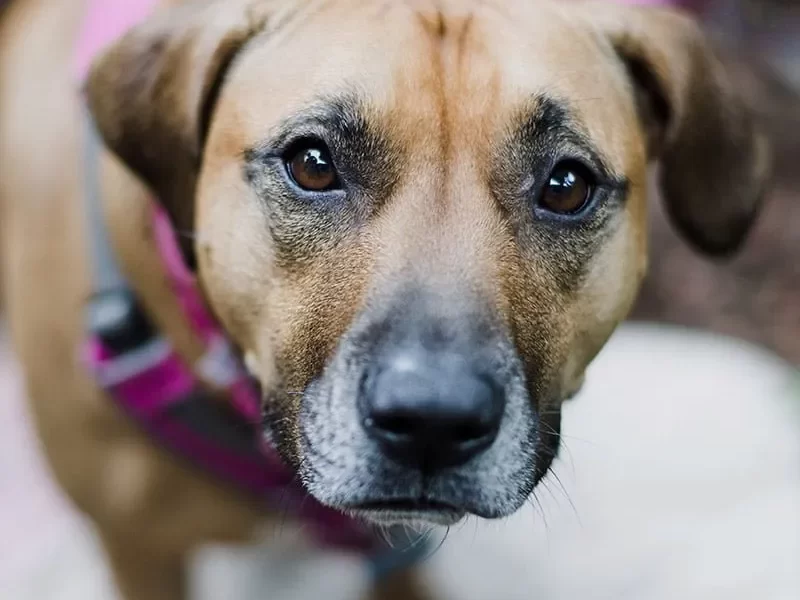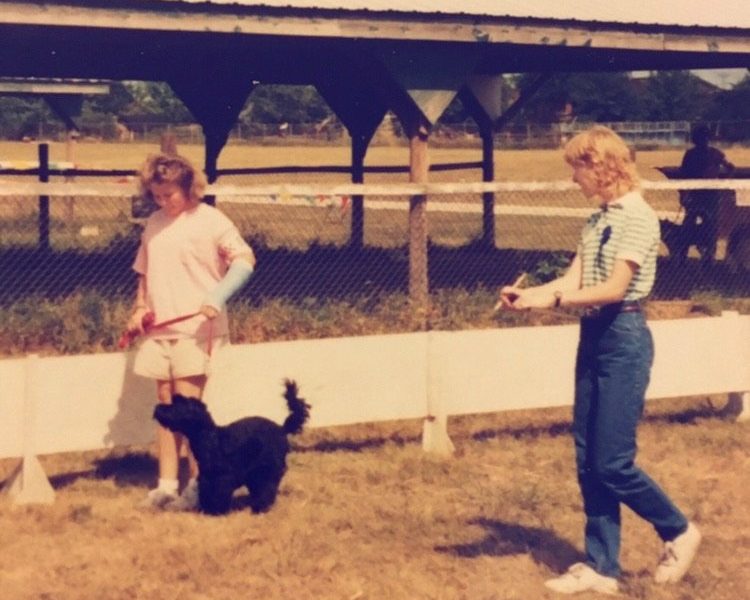Growling. It’s a sound that can send shivers down your spine, conjuring images of bared teeth and impending aggression. But hold on! While growling can certainly be a warning sign, it’s far from the only message your dog is trying to convey. In fact, understanding why dogs growl is crucial for building a strong and trusting relationship with your furry friend.
One of the most important things to remember is that growling is a form of communication. Just like humans use words and body language to express themselves, dogs rely on vocalizations and physical cues to get their point across. A growl can be a sign of fear, anxiety, discomfort, or even playfulness. The key lies in interpreting the context and the accompanying body language.

Contents
- Fear and Anxiety: When Growling Signals Distress
- Pain and Discomfort: Growling as a Self-Defense Mechanism
- Resource Guarding: Growling to Protect Possessions
- Playful Growling: When the Growl Doesn’t Bite
- Understanding Body Language: The Growl is Just One Piece of the Puzzle
- How to Respond to a Growling Dog: Safety First
- Preventing Growling: Building Trust and Communication
- Growling: A Sign of a Healthy Relationship
- Additional Tips:
- When a Growl Signals Aggression: Heeding the Warning
Fear and Anxiety: When Growling Signals Distress
Imagine a dog encountering a stranger on a walk. The dog’s tail is tucked between its legs, its ears are flattened, and it lets out a low growl. This growl is a clear sign of fear. The dog feels threatened and is trying to communicate its discomfort. In such situations, it’s important to respect the dog’s space and slowly back away. Forcing interaction can escalate the situation and make the dog feel even more cornered.
Pain and Discomfort: Growling as a Self-Defense Mechanism
Dogs in pain often growl when approached or touched. This is a natural instinct to protect themselves from further injury. If your dog growls when you try to pet a specific area, it might be signaling discomfort in that spot. Take note of the area and schedule a visit to the veterinarian to rule out any underlying medical conditions.

Resource Guarding: Growling to Protect Possessions
Some dogs exhibit resource guarding behavior, growling when someone comes near their food, toys, or even their favorite spot on the couch. This growl is a way of saying, “Back off, this is mine!” While resource guarding can be a manageable behavior, it’s important to seek professional help from a certified dog trainer to address the issue before it escalates.
Playful Growling: When the Growl Doesn’t Bite
Not all growls are created equal. During play sessions, dogs often growl in a playful manner. This growl is usually accompanied by a wagging tail, open mouth, and playful body language. It’s their way of inviting you to join in on the fun! However, it’s important to be mindful of the intensity of the growl. If it becomes too aggressive or accompanied by stiff body language, it might be a sign that playtime needs to be redirected to a calmer activity.

Understanding Body Language: The Growl is Just One Piece of the Puzzle
While the growl itself is important, it’s just one piece of the puzzle. To truly understand what your dog is trying to communicate, you need to pay attention to their entire body language. Here are some key cues to watch for:
- Tail position: A high, wagging tail usually indicates happiness or excitement. A tucked tail signifies fear or anxiety. A stiff, raised tail can be a sign of dominance or aggression.
- Facial expressions: Flattened ears and narrowed eyes often suggest fear or threat. A relaxed, open mouth with a loose tongue typically indicates friendliness.
- Posture: A hunched posture with lowered body signifies fear or submission. A stiff, upright stance can be a sign of dominance or aggression.

How to Respond to a Growling Dog: Safety First
If your dog growls, the most important thing is to stay calm and avoid any sudden movements. Yelling or punishing your dog will only make the situation worse. Here are some steps to take:
- Stop whatever you were doing: If you were petting your dog, slowly remove your hand. If you were approaching their food bowl, take a step back.
- Increase your dog’s sense of security: Offer calming words in a soothing voice and create space for them.
- Seek professional help if needed: If you’re unsure about the cause of your dog’s growling or feel uncomfortable handling the situation yourself, consult a certified dog trainer or animal behaviorist.
Preventing Growling: Building Trust and Communication
The best way to deal with growling is to prevent it from happening in the first place. Here are some tips to build trust and clear communication with your dog:
- Socialization: Expose your dog to different people, animals, and environments from a young age. This will help them become more confident and less likely to feel threatened in new situations.
- Positive reinforcement training: Reward your dog for good behavior and desired responses. This will strengthen your bond and encourage them to communicate their needs clearly.
- Respect your dog’s boundaries: Pay attention to their body language and avoid pushing them into uncomfortable situations. This builds trust and prevents them from feeling the need to growl to communicate discomfort.
Growling: A Sign of a Healthy Relationship
While a growl might seem scary at first, understanding its various meanings can actually strengthen your relationship with your dog. By paying attention to the context, body language, and type of growl, you can learn to decipher their messages and respond appropriately. Remember, a growl is often a dog’s way of communicating before resorting to more extreme measures. By recognizing the signs and addressing the underlying cause, you can build a trusting and harmonious bond with your canine companion.

Additional Tips:
- Consider consulting a veterinarian: If your dog’s growling is a new behavior or seems excessive, rule out any underlying medical conditions that might be causing them pain or discomfort.
- Be patient and consistent: Understanding and modifying dog behavior takes time and dedication. Be patient with your dog and consistent with your training methods.
- Enroll in dog training classes: Dog training classes can provide valuable guidance on understanding canine communication and addressing specific behavioral issues, including growling.
When a Growl Signals Aggression: Heeding the Warning
While growling can encompass various emotions, it’s important to recognize the warning signs of true aggression. Here are some key red flags to watch for alongside a growl:
- Intense, fixed stare: A direct and unwavering stare can be a sign of dominance or aggression.
- Snarling: Snarling is a more intense version of a growl, often accompanied by bared teeth. It’s a clear warning to back off.
- Stiff body language: A rigid posture with raised hackles indicates the dog is feeling threatened and may be preparing to attack.
- Growling accompanied by snapping: If a growl is followed by snapping at the air or towards you, it’s a strong sign of imminent aggression.
Prioritize your safety.
- Do not approach the dog: Slowly back away and avoid making eye contact.
- Remove yourself from the situation: If possible, calmly leave the room or area.
- Seek help: If the dog belongs to someone you know, alert them immediately.
In unfamiliar situations, consider professional help: If you encounter a growling dog you don’t know, it’s best to call animal control or a professional dog handler.
Remember, even a single growl can be a warning sign. By understanding the different types of growls and their accompanying body language, you can learn to recognize potential aggression and take steps to stay safe.
By understanding why dogs growl and learning to respond effectively, you can create a safe and loving environment for both you and your furry friend.


